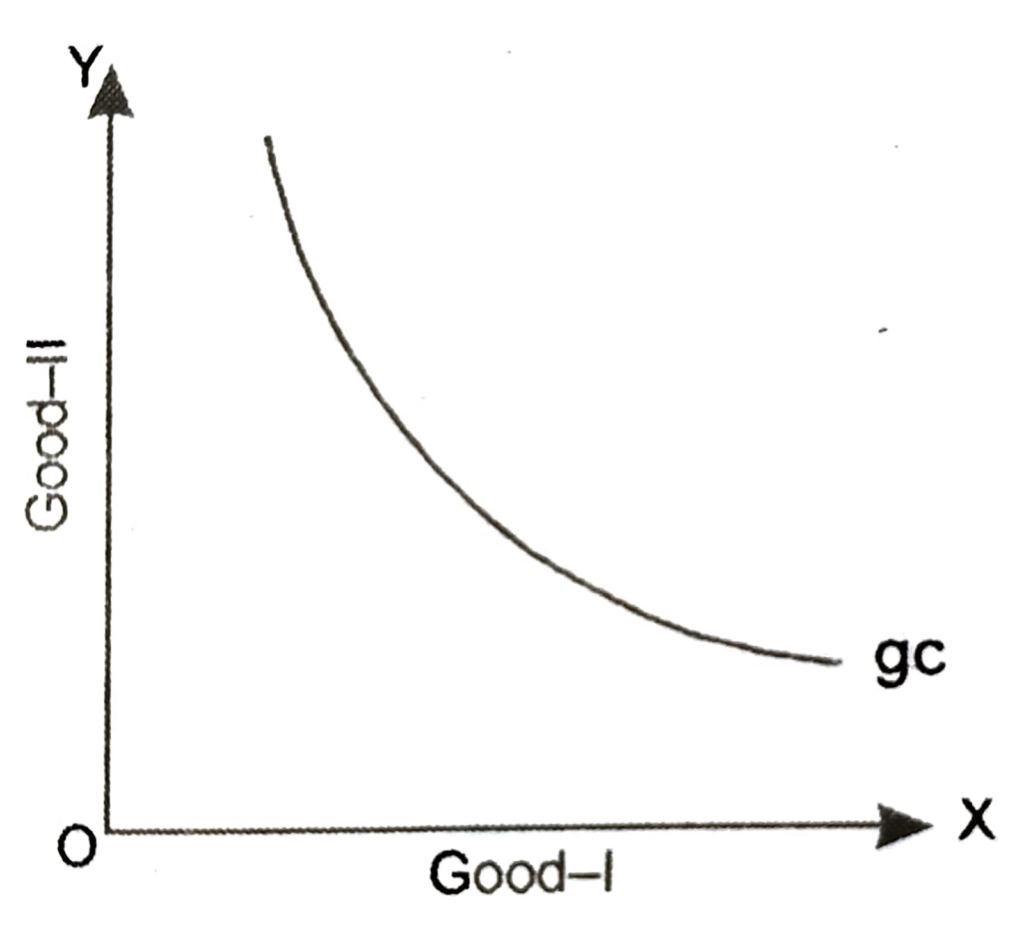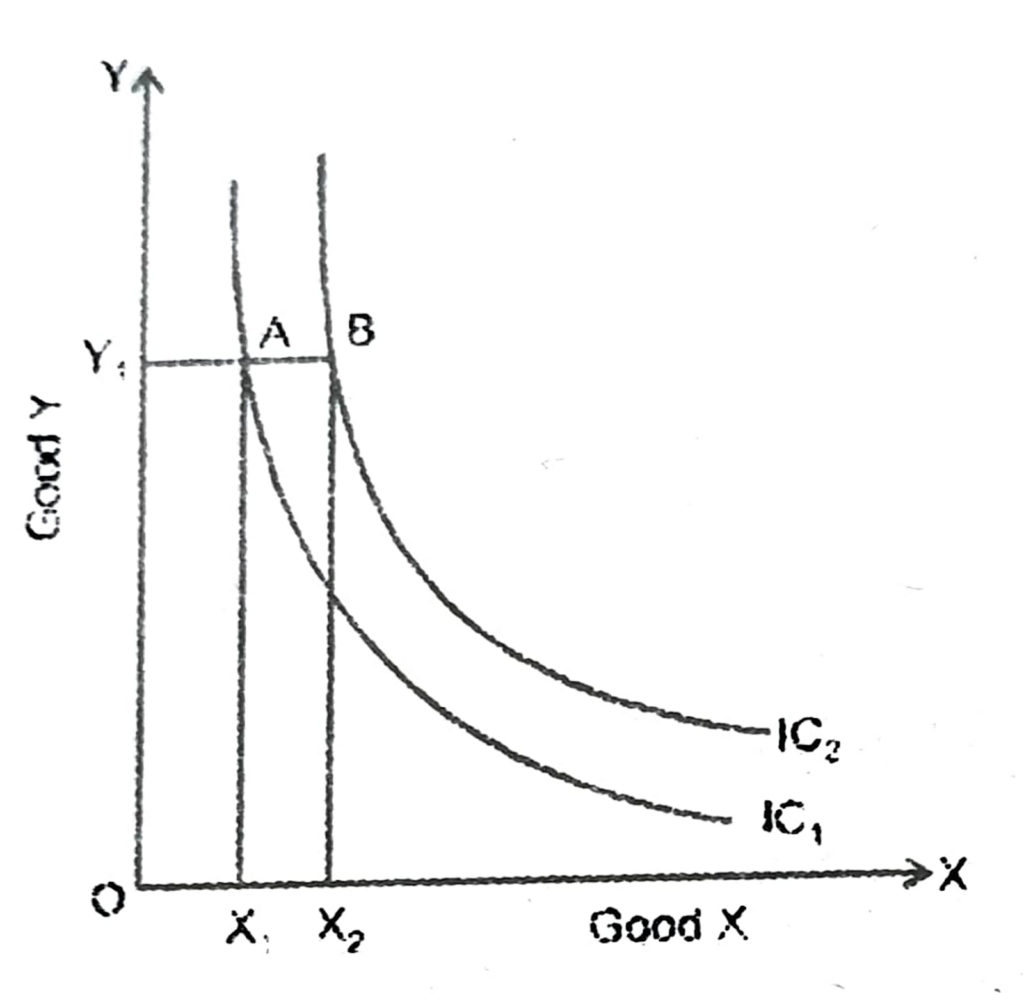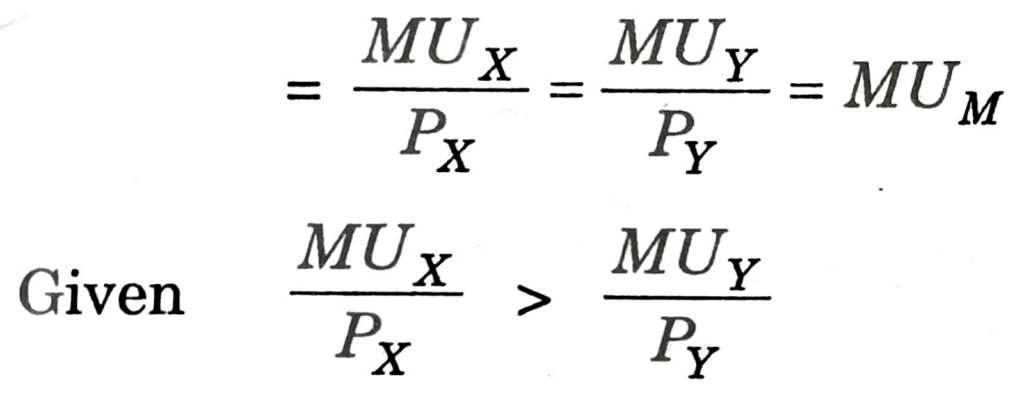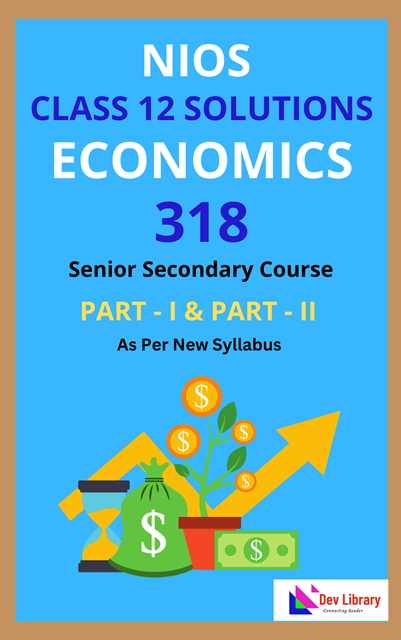NIOS Class 12 Economics Chapter 14 Consumer’s Equilibrium, Solutions to each chapter is provided in the list so that you can easily browse through different chapters NIOS Class 12 Economics Chapter 14 Consumer’s Equilibrium and select need one. NIOS Class 12 Economics Chapter 14 Consumer’s Equilibrium Question Answers Download PDF. NIOS Study Material of Class 12 Economics Notes Paper 318.
NIOS Class 12 Economics Chapter 14 Consumer’s Equilibrium
Also, you can read the NIOS book online in these sections Solutions by Expert Teachers as per National Institute of Open Schooling (NIOS) Book guidelines. These solutions are part of NIOS All Subject Solutions. Here we have given NIOS Class 12 Economics Chapter 14 Consumer’s Equilibrium, NIOS Senior Secondary Course Economics Solutions for All Chapters, You can practice these here.
Consumer’s Equilibrium
Chapter: 14
Module – VI: Consumer’s Behaviour
TEXT BOOK QUESTIONS WITH ANSWERS
INTEXT QUESTIONS 14.1.
Q.1. What is meant by consumer’s equilibrium?
Ans. Equilibrium means a state of rest from where there is no tendency to change. A consumer is said to be in equilibrium when he/ she does not intend to change his/her level of consumption i.e, when he/she derives maximum satisfaction. Thus, consumer’s equilibrium refers to a situation where the consumer has achieved maximum possible satisfaction from the quantity of the commodities purchased given his/her income and prices of the commodities in the market. As the resources are scarce in relation to unlimited wants, a consumer has to follow some principles or laws in order to attain the highest level of satisfaction.
Q.2. Define the following:
(i) Utility.
Ans. Utility: Utility is defined as the power of a commodity to satisfy a human want. Utility of a commodity is the total amount of psychological satisfaction that a person gets from consumption of a good or service, e.g. a thirsty person derives satisfaction from drinking a glass of water. So a glass of water has got utility for the thirsty person. Utility differs from person to person. Utility is subjective and cannot be measured quantitatively. Yet for the sake of convenience it is measured in ‘utils’. Marshall suggested that the measurement of utility should also be done in monetary terms by converting ‘util’ into money by using the following formula Utility in Money = Utility in Util/Utility a rupee. Utility of rupee can be assumed to be any number such as 1,2,3…. Let utility of a rupee is assumed to be 2 utils.
Then 10 utils = 10/2 = ₹ 5.
(ii) Marginal utility.
Ans. Marginal Utility (MU): Marginal utility is the addition to the total utility derived from the consumption of an additional unit of a commodity. It can also be defined as the utility from the last unit of a commodity consumed. Let us explain the concept of marginal utility with the help of an example. Suppose, a consumer gets total utility of 10 utils from consumption of one orange and 18 utils from two oranges. He gets 8 utils from consumption of second orange. So, marginal utility of second orange is 8 utils. If total utility derived from three oranges is 24 utils then marginal utility of three oranges is 6.utils (i.e. 24 – 18 utils). In this case third orange is the last orange. Thus marginal utility of 3 oranges is 6 utils. Marginal utility can be calculated by the following formula:

Where MUₙ = Marginal utility of nth unit of the commodity.
TUₙ = Total utility of n units.
TUₙ_₁ = Total utility of n – 1 units.
Xₙ = Quantity of nth unit of good X.
Xₙ_₁ = Quantity or (n-1)th unit of good X “n” takes the values 1, 2, 3, ….
(iii) Total utility.
Ans. Total utility: Total utility is the total satisfaction obtained from the consumption of all possible units of a commodity. For example, if the first orange gives you a satisfaction of 10 utils, second one gives you 8 utils and third one gives you 6 utils, then total utility from three oranges = 10 + 8 + 6 = 24 utils. Total utility can be obtained by summing up marginal utilities from consumption of different units of a commodity. Thus, total utility can be calculated as:

where, TUₙ = Total utility from n units of a given commodity
MU₁, MU₂, MU₃, MUₙ = Marginal utilities from 1st, 2nd, 3rd and nth unit of the commodity.
Q.3. State the law of diminishing marginal utility.
Ans. It is a matter of common observation that as we get more and more units of a commodity, the intensity of our desire for that commodity tends to diminish. The law of diminishing marginal utility also explains the same thing. It states that ‘as more and more units of a commodity are consumed, marginal utility derived from each successive unit goes on diminishing.’
Q.4. What will be the total utility when marginal utility is zero?
Ans. When marginal utility is zero, total utility is maximum.
INTEXT QUESTIONS 14.2.
Q.1. State the necessary condition for consumer’s equilibrium in case of a single good.
Ans. Consumer’s equilibrium in case of a single commodity can be explained on the basis of the law of diminishing marginal utility. How does a consumer decide as to how much to buy of a good? It will depend upon two factors.
(a) The price she pays for each unit which is given. and
(b) The utility she gets.
At the time of purchasing a unit of a commodity, a consumer compares the price of the given commodity with its utility. The consumer will be at equilibrium when marginal utility (in terms of money) equals the price paid for the commodity say ‘X’ i.e. MUₓ = Pₓ. (Note that marginal utility in terms of money is obtained by dividing marginal utility in utils by marginal utility of one rupee).
If MUₓ > Pₓ, the consumer goes on buying the commodity because she is paying less for each additional amount of satisfaction. As she buys more, MU falls due to operation of law of diminishing marginal utility. When MU becomes equal to price, consumer gets maximum satisfaction and now she is at equilibrium. When MUₓ < Pₓ, the consumer will have to reduce consumption of the commodity to raise his total satisfaction till MU becomes equal to price. This is because she is paying more than the additional amount of satisfaction that she is getting.
Consumer’s equilibrium (in case of single commodity) can be explained with the help of table 14.2. Suppose, the consumer wants to buy a good which is priced at 10 per unit. Further, suppose, MU obtained from each successive unit is determined. Assumed that 1 util = ₹ 1.

It is clear from the table that the consumer will be at equilibrium when he buys 3 units of the commodity X. He will increase consumption beyond 2 units as MUₓ > Pₓ. He will not consume 4 units or more of the commodity X as MUₓ < Pₓ.
Q.2. State the necessary conditions for consumer’s equilibrium in case of the goods.
Ans. The law of diminishing marginal utility applies in case of one commodity only. But in real life a consumer normally consumes more than one commodity. In such a situation, law of equi-marginal utility helps in optimum allocation of his income. Law of equi-marginal utility is based on law of diminishing marginal utility. According to the law of equi-marginal utility a consumer will be in equilibrium when the ratio of marginal utility of a commodity to its price equals the ratio of marginal utility of other commodity to its price.
Let a consumer buys two goods X and Y. Then at equilibrium.
MUₓ/Pₓ = MUY/PY = MU of last rupee spent on each good, or simply MU of Money.

Similarly if there are three goods X, Y, Z then the condition of equilibrium will be simply MU Money.
Thus, to be in equilibrium
1. Marginal utility of the last rupee of expenditure on each good is the same.
2. Marginal utility of a good falls as more of it is consumed.
To explain the consumer’s equilibrium in case of two goods let us take an example. Suppose a consumer has ₹ 24 with him to spend on two goods X and Y. Further, suppose price of each unit of X is ₹ 2 and that of Y is ₹ 3 and his marginal utility schedule is given in table.

For obtaining maximum satisfaction from spending his income of 24, the consumer will buy 6 units of X by spending 12 (₹ 12= 2 x 6) and 4 units of Y by spending 12 (₹ 12 = 2 x 6). This combination of goods brings him maximum satisfaction (or state of equilibrium) because a rupee worth of MU in case of good X is 5 (MUₓ/ Pₓ = 10/2) and in case of good Y is also 5.
(MUY/PY = 15/3)
(= MU of last rupee spent on each good)
It should be noted that, consumer’s maximum satisfaction is subject to-budget constraints i.e. the amount of money to be spent by the consumer ( 24 in this example).
INTEXT QUESTIONS 14.3.
Q.1. What is an indifference curve?
Ans. Indifference Curve: An indifference curve is a curve which represents all those combinations of two goods that give equal satisfaction to the consumer.

Reason of downward sloping from left to right: An indifference curve slopes downward from left to right. This is because of monotonic preference of a consumer. According to the monotonic preference, a consumer always prefer more of a thing. Accordingly if he simultaneously buying two goods, he can have more of one good only when he has less of the other. Thus IC curve slopes downward from left to right.
Q.2. Define marginal rate of substitution.
Ans. Marginal rate of substitution: The rate of substitution of one good for another is known as marginal rate of substitution. Suppose there are two goods-X and Y. In this case marginal rate of substitution is the rate at which the consumer is willing to give up amount of good Y to get an additional unit of X without affecting total utility. It has been explained with the help of a table.
Q.3. What do you mean by monotonic preferences? Give example.
Ans. Consumer’s preferences are called monotonic if and only if between two bundles, consumer prefers the bundle which has more of at least one of the good and no less of other good as compared to other bundles. For example, between the bundles (2X + 2Y), (IX + 2Y), (2X + 1Y) and (IX + 1Y), the consumer will prefer only bundle (2X + 2Y) to all the three bundles, if his preferences are monotonic.
Q.4. State the conditions of consumer’s equilibrium in indifference curve approach.
Ans. Condition of Consumer’s Equilibrium: According to indifference curve approach, a consumer will be at equilibrium when:
Budget line is tangent to the indifference curve.
i.e. slope of budget line = slope of indifference curve
Or, MRSXY = PX/PY

Suppose, two goods consumed are X and Y. Further suppose the consumer wants to increase consumption of good X in place of good Y. MRS is the rate/at which consumer is willing to sacrifice amount of Y to get one more unit of X. Market rate of exchange (MRE) is the rate at which consumer has to sacrifice amount of Y to get one more unit of X.
When MRS > MRE, it implies that in order to obtain one unit of X, the consumer is willing to sacrifice more units of Y than the market allows. This will lead to increase in consumption of X but decrease in consumption of Y. MRS starts falling. He continues to consume more of X till MRS becomes equal to MRE.
When MRS < MRE, it implies that inorder to get one more unit of X, the consumer is willing to sacrifice less units of Y than the market requires. He will reduce the consumption of X and increase consumption of Y. MRS Starts rising. He continues reducing consumption of X till MRS becomes equal to MRE.
Given the indifference map and the budget line, the consumer is at equilibrium at point E. The consumer obtains maximum satisfaction when, he consumes bundle E containing OX₁ quantity of good X and OY₁ quantity of good Y. At E point budget line is tangent to the indifference curve IC₂, i.e. MRS = MRE= Px/PY Note that the consumer can buy bundles C and D because they also lie on his budget line but these bundles lie on lower indifference curve which represents lower level of satisfaction. He will like to consume bundle G lying on indifference curve IC₃ which represents highest level of satisfaction but it is beyond his budget. So the consumer’s equilibrium bundle is X₁, Y₁ 1 at point E where the budget line is tangent to indifference curve.
TERMINAL EXERCISE
Q.1. What is meant by consumer’s equilibrium? Explain the condition of consumer’s equilibrium in case of a single commodity using utility approach.
An’s. Given that a consumer consumes only two goods X and Y and is in equilibrium. Hence consumer is satisfying the following condition.
MUₓ/Pₓ = MUY/PY = MU of last rupee spent on each good.
Where MUₓ and MUY are the marginal utility obtained from consuming X and Y and Pₓ and PY and the prices of the two goods.
This means that MU of the last rupee spent on each good is same.
If the price of X increases, then, MUY/PY will rise i.e.,

This means the MU of last rupee spent on Y is more than MU of last rupee spent on X. This will induce the consumer to buy more of Y. So, he will start transferring his expenditure from X to Y. Consequently, the consumption of Y rises and X falls. This shows that as the price of a good rises, it leads to fall in demand for that good.
Q.2. Explain the condition determining how many units of good the consumer will buy at a given price.
Ans. Given price the consumer companies its marginal utility with price. When he finds marginal utility greater than its price, he continues to buy more. As he buys more, marginal utility falls. When the falling marginal utility becomes equal to the price, the consumer does not buy more.
If he buys more, marginal utility will becomes less than the price. So he buys upto the point where marginal utility is equal to price of the commodity.
Q.3. Explain the relationship between total utility and marginal utility.
Ans. Relationship between marginal utility and total utility:
1. Total utility increases as long as marginal utility is positive.
2. Total utility is maximum when marginal utility is zero.
3. Total utility starts declining when marginal utility becomes negative.
Q.4. Explain the law of diminishing marginal utility with the help of a schedule.
Ans. Law of Diminishing Marginal Utility: It states that as the consumer consumes more and more of a good, the addition to total utility obtained goes on decreasing e.g. if a consumer gets a total utility of 5 units from one unit and 9 units from two units. If he uses the IIIrd unit the consumer gets total utility of 7 units. This shows that as the consumer consumes more of a unit of good, the addition to total utility goes on decreasing.
Q.5. A consumer buys two goods X and Y. Explain the condition of his equilibrium using utility approach.
Ans. Given that a consumer consumes only two goods X and Y and is in equilibrium. Hence consumer is satisfying the following condition.
MUₓ/Pₓ = MUY/PY = MU of last rupee spent on each good.
Where MUₓ and MUY are the marginal utility obtained from consuming X and Y and Pₓ and PY and the prices of the two goods.
This means that MU of the last rupee spent on each good is same.
If the price of X increases, then, MUY/PY will rise i.e.

This means the MU of last rupee spent on Y is more than MU of last rupee spent on X. This will induce the consumer to buy more of Y. So, he will start transferring his expenditure from X to Y. Consequently, the consumption of Y rises and X falls. This shows that as the price of a good rises, it leads to fall in demand for that good.
Q.6. A consumer buys two goods X and Y. Explain the condition of his equilibrium using indifference approach.
Ans. Consumer will be equilibrium at the point where he gets the maximum satisfaction. Here a consumer will attempts to reach the higher indifference curve which is within purchasing power shown by the budget line. Hence a consumer will be at equilibrium at the point which the budget line is tangent to the indifference curve. It has been shown below in the diagram.

The diagram shows that it is point C at which the consumer is in equilibrium. At this point he maximises his satisfaction.
Q.7. Explain the properties of indifference curve.
Ans. Properties of indifference curve:
(i) Indifference curves are always convex to the origin: Indifference curves are always convex to the origin because of diminishing marginal rate of substitution. As the consumer consumes more and more of one good, his marginal utility of this good keeps on declining and he is willing to give up less of other good. Therefore, indifference curves are convex to the origin.
(ii) Indifference Curves slope downwards: It implies that as a consumer consumes more of one good, he must consume less quantity of the other good so that the total utility remains the same.
(iii) Higher Indifference Curves represent Higher level of satisfaction: Bundle A on indifference curve IC₁, contains OY₁ quantity of good Y and OX, quantity of good X. Bundle B on indifference curve IC₂ has same quantity i.e. OY₁ of good Y but more quantity i.e. OX₂ of good X. Since, the consumer’s preferences are monotonic, he will prefer bundle B to bundle A. It means, higher indifference curves represent higher level of satisfaction.

(iv) Indifference Curves can never Intersect: We have two indifference curves that intersect at point B. The consumer is indifferent between bundles A and B as they lie on the same indifference curve 1C₁. Similarly, the consumer is indifferent between bundles C and B as they lie on the same indifference curve IC₂. This implies that bundles A and C give the consumer the same level of satisfaction. However, this is not possible as higher indifference curve represents higher level of satisfaction.

Assumptions of Indifference Curves: Indifference curve analysis is based upon the following assumptions:
(i) It is assumed that the consumer has fixed amount of money whole of which is to be spent on two goods, given the market prices of goods.
(ii) It is assumed that the consumer has not reached the point of satiety. He always prefers more of both the commodities.
(iii) Consumer can rank his preferences on the basis of the satisfaction from each bundle of goods.
(iv) It is assumed that marginal rate of substitution is diminishing.
(v) Consumer is a rational person i.e. he always aims to maximize his satisfaction.
Some Other Important Questions For Examinations
Very Short Answer Type Questions
Q.1. Explain the meaning of diminishing marginal rate of substitution with the help of a numerical example.
Ans. Diminishing marginal rate of substitution: Diminishing marginal rate of substitution means that marginal rate of substitution goes on diminishing with every increase in the quantity of the commodity, the consumer will be willing to forgo lesser quantity of commodity Y. This can be seen in the following table:
| Combination | Grapes | Oranges | MRS |
| A | 1 + | 20 | – |
| B | 2 + | 12 | 1:8 |
| C | 3 + | 8 | 1:4 |
| D | 4 + | 6 | 1:2 |
It is clear that MRS goes on falling.
Q.2. Explain the relation between total utility and marginal utility.
Ans. The relation between total utility and marginal utility is as follows:
(a) Marginal utility of all units of consumption, when added, will be total utility.
(b) When marginal utility decreases, total utility increases at a diminishing rate.
(c) When marginal utility is zero, total utility is maximum.
(d) When marginal utility is negative, total utility diminishes.
Q.3. Explain the conditions determining how many units of a good the consumer will buy at a given price.
Ans. Given price the consumer companies its marginal utility with price. When he finds marginal utility greater than its price, he continues to buy more. As he buys more, marginal utility falls. When the falling marginal utility becomes equal to the price, the consumer does not buy more.
If he buys more, marginal utility will becomes less than the price. So he buys upto the point where marginal utility is equal to price of the commodity.
Q.4. Write down the assumptions of law of diminishing marginal utility.
Ans. Assumptions of law of diminishing marginal utility:
1. The goods should be consumed in sufficient quantity.
2. All the units of the commodity should be of the same size and quality.
3. The consumption should be continuous.
4. There should be no change in the price of the commodity.
5. There should be no change in the price of the substitute goods.
6. There should be no change in the social, mental and economic status of the consumer.
7. There should be no change in the consumer’s tastes, preferences, fashions etc.
Q.5. Define a budget line. When can it shift to the right?
Ans.

A budget line: A budget line is the graphic presentation of all the bundles (i.e., the combination of two goods) which a consumer can actually buy with his entire income at the prevailing market price. It is also known as price line. The equation of budget line is as follows:
P₁X₁ + P₂X₂ = M
X₁ shows the units of Good-1 and X₂ shows the unit of Good-2. P₁ stands for the price of Good-1 and P₂ for price of Good-2. M stands for money income.
Q.6. Explain the distinction between budget set and budget line.
Ans. Budget Set: Budget set is the attainable combination of a set of two goods, given the price of the goods and income of the consumer.
Budget Line: Budget line is a line showing different combination of a set of 2-Goods that the consumer can buy given his income and price of the goods. It is also called price line, as it shows price ratio between Good X and Good Y.
Q.7. A consumer consumes only two goods X and Y. At a consumption level of these two goods, he finds that the ratio of marginal utility to price in case of X is higher than in case of Y. Explain the reaction of the consumer.]
Ans. Consumer Equilibrium

The consumer will increase the consumption of Good X in place of Good Y. Accordingly MUₓ would start declining while MUy would start rising. To attain the consumer equilibrium, consumer not increases the quantity of X and decreases the quantity of Y till MUₓ/Pₓ = MUY/PY.

Hi! my Name is Parimal Roy. I have completed my Bachelor’s degree in Philosophy (B.A.) from Silapathar General College. Currently, I am working as an HR Manager at Dev Library. It is a website that provides study materials for students from Class 3 to 12, including SCERT and NCERT notes. It also offers resources for BA, B.Com, B.Sc, and Computer Science, along with postgraduate notes. Besides study materials, the website has novels, eBooks, health and finance articles, biographies, quotes, and more.



